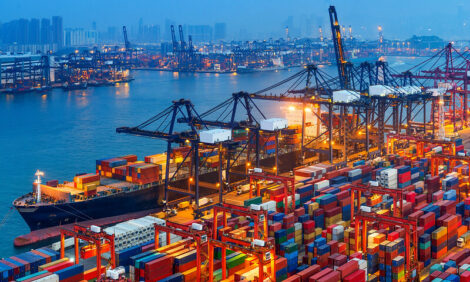



Trade Conflicts Fill US Food Banks
US - United Food Bank in Mesa, Arizona, like many of the nation's food banks, is reportedly facing a daunting task: Trying to distribute new shipments from the US Department of Agriculture caused by US President Donald Trump's trade conflicts with a number of countries. Storage and transportation will be a challenge, food bank leaders say.On 1 October, the US government started sending surplus food to the nation's food banks in a $1.2 billion program as part of its effort to bail out farmers hurt by trade conflicts.
"What we are looking at is a 20 per cent increase in those bonus items and mitigation food," said Tyson Nansel, director of public and media relations at United. "It's excellent, we are very excited to be the beneficiaries of this food, but right now, we are desperate to get the food out."
Feeding America, a network of 200 food banks, estimated that distribution will cost $300 million to $400 million and has asked US Congress and the agriculture department for more funding.
Of the $1.2 billion or so of purchases to be spread over 12 months, pork is expected to account for nearly half, $559 million, followed by apples, oranges/orange juice, dairy products and pistachios-each at more than $80 million. The government also plans to buy other items, from beef to blueberries and peanut butter to macadamia nuts.
The government estimates that 40 million people in the US live in households that are "food insecure". Many depend on emergency food provided by pantries, often small charities based in churches and community halls that are stocked by the food banks.
From ham to pears
Mr Nansel said United serves 61,000 meals daily in a five-county area. It will receive 97 truckloads of food from the USDA from October through May 2019. He said the food will include pork chops, ham, grapefruit, potatoes, pears, milk and cheese.
"What we don't get a lot of is meat, so we are very excited to be getting this amount of meat coming in," Mr Nansel said.
But how to distribute the bonus food is the issue. Mr Nansel said it costs the organization 23 cents to deliver a pound of food, so it is seeking to raise $350,000 in the next few months to increase its workforce and get the food out as soon as possible.
In Contra Costa, a county of more than 1 million people in the San Francisco Bay Area, the surplus food shipments have Caitlin Sly, program director at the Food Bank of Contra Costa and Solano, scratching her head.
"We basically have a very short window to accept additional products," Ms Sly said. "It's very beneficial to us to have access to additional products, but it is posing a logistical challenge, as our space is not built to accommodate such a large amount, especially frozen food, cold storage and refrigerated food."
She said the nonprofit is getting 11 truckloads and potentially more food from mid-October through the end of March via the program.
The food bank can only distribute to people who meet income guidelines and signed up for the emergency food assistance program.
"That presents some challenges, because we serve a lot more people than that, but we can only offer that food to the folks that meet those specific income guidelines," said Ms Sly.
Ms Sly said that the Food Bank of Contra Costa and Solano serves 178,000 people a month, but only 20,000 people meet the guidelines.
"We've looked at actually renting offsite storage, but a portion of our USDA allocations is for administering the program, these bonus loads are not coming with additional administrative funds," Ms Sly said. She said the organization would probably look to raise funds if more food arrives.
TheCattleSite News Desk


